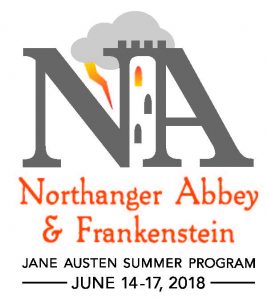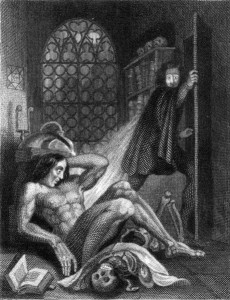 This summer more than 100 people, from readers to writers to scholars, will gather at the sixth-annual Jane Austen Summer Program to celebrate the bicentenary of Jane Austen’s Northanger Abbey and Mary Shelley’s Frankenstein. Attendees of “Northanger Abbey and Frankenstein: 200 Years of Horror” will have the opportunity to hear expert speakers and participate in discussion groups on the gothic-inspired novels. They also will partake in an English tea, dance at a Regency-style masquerade ball, attend Austen-inspired theatricals, and visit special exhibits tailored to the conference.
This summer more than 100 people, from readers to writers to scholars, will gather at the sixth-annual Jane Austen Summer Program to celebrate the bicentenary of Jane Austen’s Northanger Abbey and Mary Shelley’s Frankenstein. Attendees of “Northanger Abbey and Frankenstein: 200 Years of Horror” will have the opportunity to hear expert speakers and participate in discussion groups on the gothic-inspired novels. They also will partake in an English tea, dance at a Regency-style masquerade ball, attend Austen-inspired theatricals, and visit special exhibits tailored to the conference.
Hosted by the University of North Carolina, Chapel Hill and JASNA-NC, the events will take place from June 14 to 17, 2018 at the Hampton Inn in Carrboro and at various locations on the UNC campus in Chapel Hill, NC. The program discussions will consider the two classic novels in their historical contexts as well as their afterlives in fiction and film. Program Director Inger Brodey notes, “both Austen in Northanger Abbey and Shelley in Frankenstein react eloquently to the gothic taste in literature and have similar commentary on the frightening results of the French Revolution. Bringing the authors’ works together will allow us to explore their revolutionary legacy, both in terms of literary innovation and social change.”
Participants old and new praise the program’s educational mission, along with its innovation and focus on community-building. “The conference on Mansfield Park was my first experience of JASP—and now I’m hooked!,” says Vicky Brandt. “It’s a wonderful idea to open up an academic conference to the interested public: everyone should be able to experience the loving inquiry that is the heart of scholarship. All the presentations were enlightening; the small group discussions lively and insightful; the Saturday evening Regency ball almost as beautiful to watch as the ones we see on film. In short, I can think of no better way to describe it than with Austen’s own words: ‘the company of clever, well-informed people, who have a great deal of conversation.’” Pamela Martin, a recipient of the program’s teacher scholarship, adds, “I found the Jane Austen Summer Program to be one of the most inspirational events I have ever attended. It was refreshing and rewarding to be a part of an academic exchange of ideas for a bit, and bask in the glory of just learning for learning sake!”
For more program information, to see comments and photos from previous programs, or to register, please visit the program’s website janeaustensummer.org or follow the program at facebook.com/janeaustensummer or via twitter, @JASPhotline. You may also contact us at [email protected].
Middle- and high-school teachers are encouraged to visit the website for information on available scholarships and continuing education credits.
Media interested in attending the program and interviewing the participants should reach out to Suzanna Geiser at [email protected] or (919) 848-3454.
(Original piece provided by Carlie Wetzel, SITES Lab, UNC-CH).
